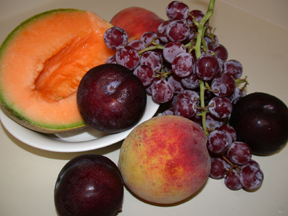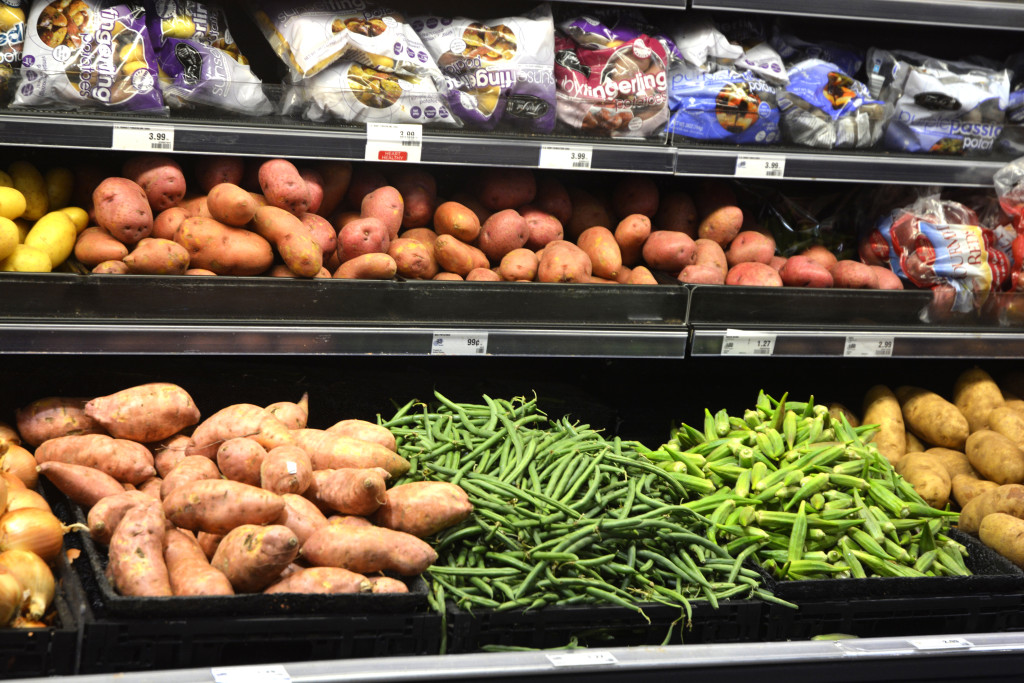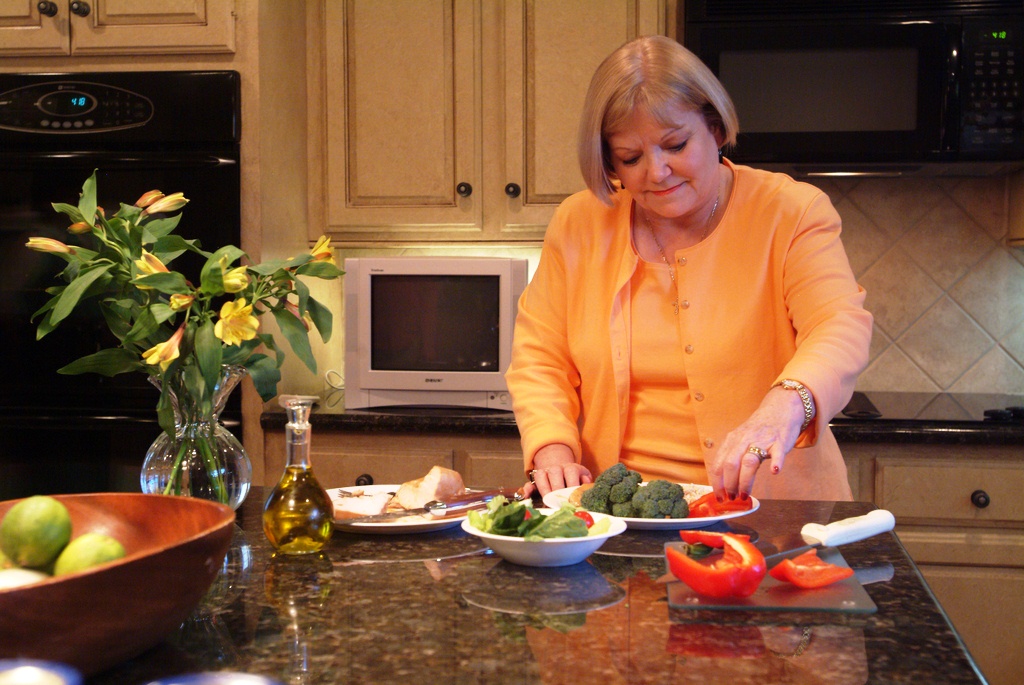Produce safety top of mind with consumers after recent salmonella scares
AgriLife Extension provides tips to help reduce possibility of foodborne illness
Recent instances of salmonella contamination in some produce have led to widespread recalls and heightened consumer concern over food safety.

“Occasionally, fresh fruits and vegetables can become contaminated with harmful bacteria or viruses, which are also known as pathogens,” said Juan Anciso, Ph.D., Texas A&M AgriLife Extension Service vegetable specialist at the Texas A&M AgriLife Research and Extension Center in Weslaco. “Some examples of these are salmonella, E. coli and hepatitis A.”
Anciso said within the past few months, instances of salmonella contamination in out-of-state produce, especially peaches and red onions, have caused consumers everywhere to be more wary about the safety of the produce they buy for themselves and their families.
“Contamination can occur at any point from the field to the table, so it’s often difficult to determine precisely where the produce may have come in contact with the pathogen,” he said.
“While farms and processing facilities have safety guidelines they are required to follow, the process of bringing produce from field to the table can be complicated and each step presents an opportunity for contamination.”
Anciso said E. coli and salmonella contamination are related to fecal material, which can come from large animals that wonder into fields, rodents that infiltrate storage or processing facilities or inadequately filtered irrigation water.
“Fruits and vegetables contaminated with these pathogens can cause foodborne illness with symptoms that include nausea, vomiting, diarrhea, headaches and fever,” he said.
Food handling for safety
Rebecca Dittmar, AgriLife Extension program specialist in nutrition, Kerrville, said vigilance and proper handling and washing practices can greatly reduce the risk of foodborne illness from fresh produce.
“You should thoroughly rinse fresh produce with fresh water just before you eat or prepare it to be eaten,” she said. “Use running water to rinse only the fruits and vegetables you plan to eat immediately or in the very near future.”

Dittmar said fruits and vegetables with a firm skin should be rubbed by hand or scrubbed with a clean brush while rinsing under running water.
“Soft fruits and vegetables such as tomatoes should be rubbed gently to loosen the dirt,” she said. “Remove and throw away the outer leaves of lettuce and cabbage before washing them.”
In a word of caution, Anciso noted that while thorough washing of fruits and vegetables before consumption is a good common-sense practice and can eliminate most pathogens from the surface of produce, it’s still not a “foolproof” method for eliminating all pathogens such as salmonella and E. coli.
Food safety guidance while shopping
Dittmar said when shopping for fresh produce, avoid items that are bruised, damaged or moldy or that show signs of insect damage.
“Bruises and cuts may allow pathogens to enter a fruit or vegetable,” she said. “And damaged produce typically spoils faster. If you can’t find good-quality fresh produce, using canned or frozen fruits and vegetables may be an option.”

She said when shopping for pre-cut fresh fruits and vegetables, buy only those that are refrigerated or surrounded by ice and avoid any damaged items and open or torn packages.
“Check the use-by or sell-by dates on packages of pre-cut fruits and vegetables and do not eat them after the date shown on the package,” Dittmar said.
She said keep fresh produce separate from raw beef, poultry, fish and seafood in the shopping cart or when it is bagged.
“Place raw meats in plastic bags as blood and juice from raw meat may contain pathogens that could contaminate fresh fruits and vegetables,” she said. “And keep fresh produce away from any household chemicals in the shopping cart and in the grocery bags.”
Safe storage at room temperature
Dittmar offered the following tips for safe storage of produce at room temperature:
- Do not wash produce before storing but only when you are ready to use it. However, if the produce is dirty when purchased, rinse and then dry well before storing.
- Keep storage areas clean and free of insects. Store fruits and vegetables in bowls, bins or mesh bags off the floor.
- Keep produce in a cool, dry, dark place. Do not store near heat sources such as ovens, water heaters and hot water pipes or in direct sunlight.
- Store fresh fruits and vegetables away from household cleaning products as these may be toxic.
- Do not place heavy items on top of fruits and vegetables because bruising can cause spoilage.
- Check stored fruits and vegetables often and throw out items that show signs of spoilage.
Safe storage in the refrigerator
“All fruits and vegetables should be stored in the refrigerator once they are cut or peeled,” Dittmar said. “And pre-cut fruits and vegetables bought at the store should also be refrigerated immediately.”
She offered these additional tips for safe storage of produce in the refrigerator:
- Do not wash whole fruits and vegetables before storing them.
- Store all fruits and vegetables in the crisper or produce drawer and do not overload the crisper. It is best to buy only the amount of produce you will use within a few days.
- Cover cut fruits and vegetables tightly with plastic wrap or store in sealed plastic bags or clean, air-tight containers.
- Keep fruits and vegetables separate from raw beef, poultry, fish and seafood. Place raw meats on the bottom shelf of the refrigerator in a tray or pan to prevent blood or juices from dripping onto fresh produce.
- Keep refrigerator temperature 40 degrees or lower.
- Clean the refrigerator as needed, throwing out any spoiled food. Wipe spills with hot, soapy water.
Food safety tips while preparing produce

Dittmar said when preparing fresh fruits and vegetables, all utensils, countertops and cutting boards should first be washed with hot, soapy water and sanitized with a mixture of one teaspoon of chlorine bleach in one quart of water.
“It’s especially important to wash and sanitize cutting boards and utensils that have been in contact with raw meat before you use them to prepare fresh produce,” she said.
Dittmar also provided these additional tips on preparing produce for consumption:
- Wash all whole fruits and vegetables before preparing them—even if the skin or rind will not be eaten.
- Wash fruits and vegetables in clean, running water and do not use detergents, soaps or bleach.
- To wash berries, parsley and greens, put them in a clean colander and spray them with a kitchen sink sprayer. You can also gently turn the produce as you hold it under running water.
- Once cut or peeled, fresh produce should be refrigerated within two hours. If it is left at room temperature for more than two hours, throw it away.
“If you purchase good-quality fruits and vegetables, store them properly and wash them thoroughly, you can greatly reduce the chance of foodborne illness,” Dittmar said.


